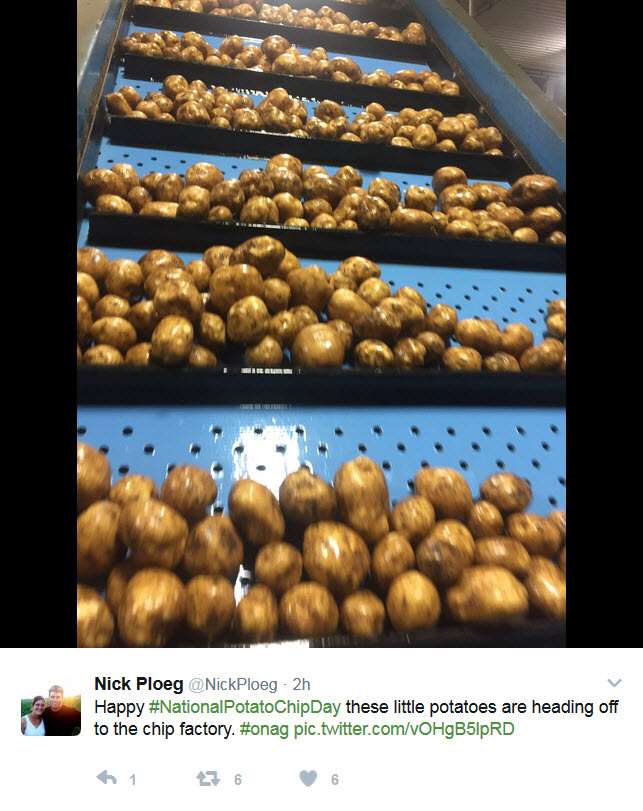Looking at the world’s top potato producing countries
By Diego Flammini
Assistant Editor, North American Content
Farms.com
Across various social media platforms, people are celebrating National Potato Chip Day.
Individuals are sharing their favourite flavors and pop culture references celebrating the beloved potato chip.
But without potato producers, there couldn’t even be a national day to honour the spud-based snack.
With that in mind, here’s a look at the top 10 potato-producing countries around the world in 2013. The data is from the Food and Agricultural Organization (FAO) of the United Nations.
Country Production (tonnes)
- China 95,987,500
- India 45,343,600
- Russia 30,199,100
- Ukraine 22,258,600
- United States 19,843,900
- Germany 9,669,700
- Bangladesh 8,603,000
- France 6,975,000
- Netherlands 6,801,000
- Poland 6,334,200

Photo: Brennan Woolley/Twitter
In the United States, there are five leading states when it comes to potato production, according to the Agricultural Marketing Resource Center. Combined, these states cultivate more than 14 million tonnes of potatoes.
State Production (tonnes)
- Idaho 7,077,782
- Washington 5,365,997
- Wisconsin 1,425,412
- Colorado 1,127,710
- North Dakota 1,056,688
Canada ranked 16th in the world according to the FAO’s rankings. And in Canada, Prince Edward Island is the country’s potato capital.
Statistics Canada reports the country produced 4,780,047 tonnes of spuds in 2015. Prince Edward Island accounted for 1,127,177 tonnes.

Photo: Nick Ploeg/Twitter
Rounding out the top five in Canadian potato production are Manitoba (981,120 tonnes), Alberta (874,073 tonnes), New Brunswick (684,925 tonnes) and Quebec (595,023 tonnes).
Use the hashtag #NationalPotatoChipDay on social media to show your appreciation for the snack.
What’s your favourite flavour?